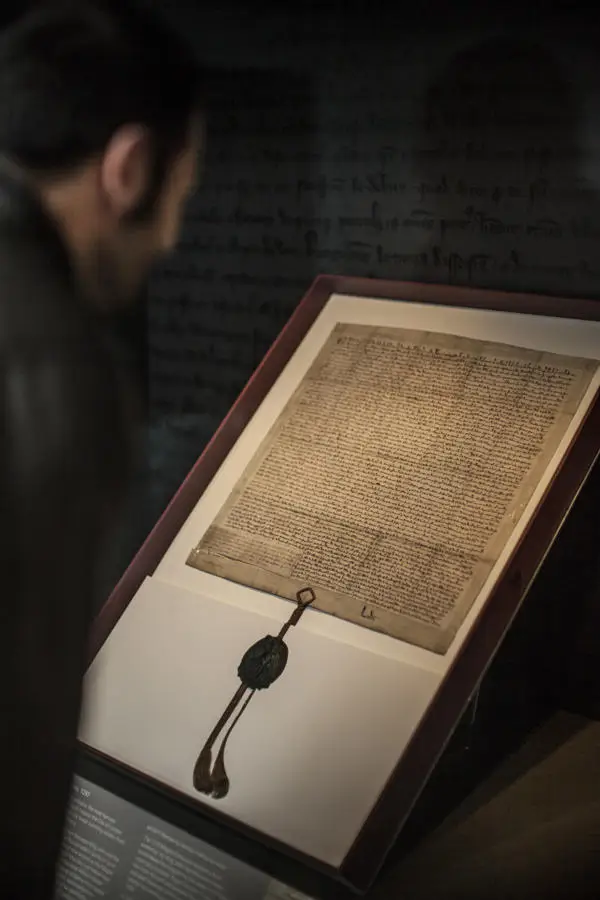Magna Carta
The City Corporation owns one of the few copies of the Magna Carta in existence today.
Kept in storage at The London Archives and periodically displayed at the Heritage Gallery, the document is widely regarded as one of the finest surviving 13th-century copies. Because of its delicate nature, it is not on permanent display.
History of the Magna Carta
The City of London played an active role in the events that led to Magna Carta’s creation in 1215 and the Mayor (later known as the Lord Mayor) was appointed, along with the barons, to see that its provisions were carried out. London was also the only city specifically named in the document, in the clause that stated that
"the City of London shall have all its ancient liberties by land as well as by water"
Over the years, Magna Carta developed great significance for Americans and is thought to have influenced the framers of the Declaration of Independence.
The City of London Corporation’s 1297 Magna Carta includes Edward I’s seal and the original writ directed to the Sheriffs of London, ordering that the Charter be promulgated within the City. The Charter was confirmed in Parliament, which gave the document statutory force.
The tribulations of King John have become part of English historical folklore and are familiar to anyone who knows the story of Robin Hood. The concessions King John had to make to maintain peace mean that his reign is often perceived as particularly important for the development of the English constitution and for the establishment of people’s rights and liberties.
John became king in 1199, but by 1215 he was faced with a major rebellion. Hoping to win the Londoners to his side, he granted them the right to choose annually a City mayor. In doing this, he was confirming a custom that had already developed, as the earliest recorded mayor, Henry Fitz-Ailwin (d. 1212), is identified as such in a document of 1194 and is believed to have held office from 1189.
The grant requires the mayor to be presented to the sovereign for approval and to take an oath to be faithful. These provisions have been respected ever since, and still govern the annual election and swearing in of the Lord Mayor.
Just a few weeks after he granted this charter, John’s enemies forced him to agree to a new statement of principles on the rights of subjects and the limits of royal authority. This new Great Charter - Magna Carta - was a major step forward in defining individual freedom and the rule of law. Although its immediate intention was to end civil war, it has over the centuries achieved a worldwide symbolic status as one of the great documents of its kind.
You can now watch a short film about the story of Magna Carta in the City of London and Temple.
